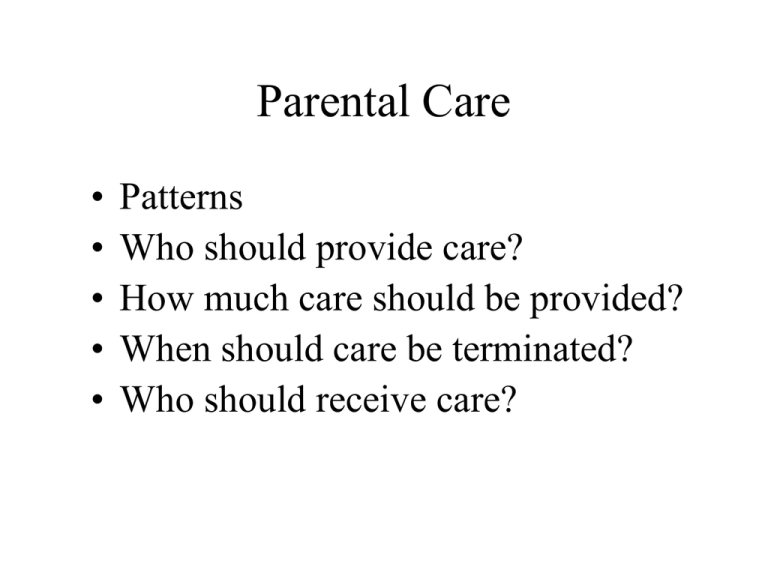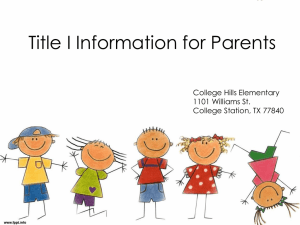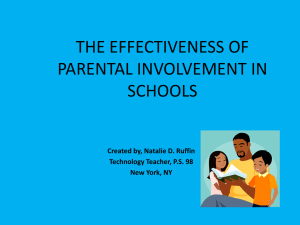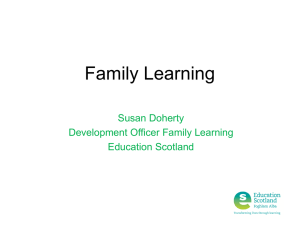
Parental Care
•
•
•
•
•
Patterns
Who should provide care?
How much care should be provided?
When should care be terminated?
Who should receive care?
Insect parental care
Distribution of parental care in vertebrates
• Teleost fishes = 21% of families show PC
– 61% have male parental care
• Amphibians = 71% show PC
– 50:50 maternal:paternal
• Birds = 100% show PC
– Usually biparental, sometimes one sex
• Mammals = 100% show PC
– Usually maternal, sometimes biparental
Alternative hypotheses for
providing care
• Confidence of paternity
– Expect parent with highest certainty to be
parental
• Order of gamete release
– First to deposit gametes can desert
• Association
– Sex nearest to offspring when care is needed
Parental care
in fishes and
frogs
Alternative hypotheses for providing
care: evidence
• Confidence of paternity (fish and herps)
– Internal fertilization - 86% maternal care
– External fertilization - 70% paternal care
• Order of gamete release
– Simultaneous fertilization (most species) - 78%
paternal
– Other species - male deposits first, but doesn’t leave
• Association (fits data the best)
– Territorial males have external fertilization
Two or one parents?
• Birds and mammals are more likely to
exhibit biparental care because parents feed
young and two are often better than one
• Fishes and amphibians typically only guard
eggs and don’t feed young. One parent
usually can do this as well as two.
– Exceptions include some cichlids that show
biparental care
Seahorse
Why male
only
parental
care?
Randall’s jawfish
Mallee fowl
Stickleback
Parental care can cost
females more than males
Mouthbrooding results in weight loss due to reduction in feeding,
and the cost of brood care is higher in females than males
Growth,
fecundity and
paternal care
How much care to provide?
• Parental investment: “any investment by the
parent in an individual offspring that
increases the offspring’s chance of
surviving at the cost of the parent’s ability
to invest in other offspring (Trivers 1972)
• Costs of parental care include
– Reduced future survival
– Reduced mating opportunities
Parental care can decrease adult survival
Parental care decreases mating opportunities
A female-biased sex ratio increases the cost of brood care
for males because parental care detracts from mating
Parental investment changes over time
Parent-offspring conflict
Parent-offspring conflict
Wallaby conflict
• Assume fixed total resource that
can be used to feed offspring
• Parents want to distribute
resource equitably to all n
offspring
• Offspring want more than 1/n
but not all since they are related
to siblings
• Difference between parent and
offspring optimum increases as
relatedness decreases
Parent-offspring conflict:
how much care to provide
Parent is equally related
to all offspring, but
offspring are less related
to sibs than themselves.
Assuming full siblings,
i.e. r = 1/2
B - measured in +units of RS of current offspring
C - measured in - units of RS of future offspring
B
C
Benefit or
cost to
parent
C/2
Max. inclusive fitness
for parent
Max. inclusive fitness
for offspring
Level of parental investment
Begging loudness increases as
relatedness within nest decreases
Brown-headed cowbird
Parent-offspring conflict:
time of weaning
(Full-sibs)
(Half-sibs)
Parental investment and maternal age
If reproductive value declines
with maternal age, then older
females should be willing to
expend more on parental care
Who should receive care?
• Concorde fallacy: past investment should
not determine future investment - only
prospects for future success
• Expect parents to use honest indicators of
offspring quality to allocate care
Chick color affects parental
care in mixed broods of coots
Control broods were unaltered
(orange) or had orange feathers
trimmed (black)
Experimental broods had
1/2 orange, 1/2 black chicks
Chick color likely indicates
offspring health
Sibling competition
Sibling conflict










